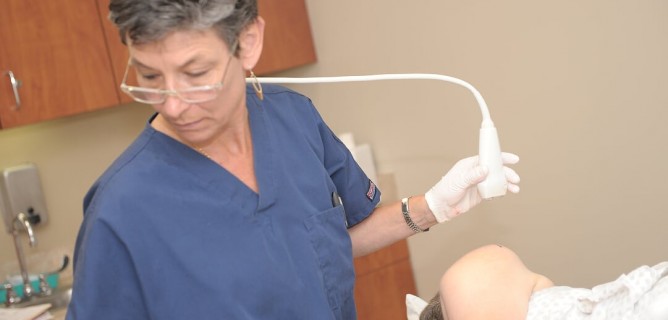By Annette “Dr. Z” Zaharoff, M.D.
The most recent Prolotherapy Conference and Research Symposium in Madison, Wisconsin, introduced practitioners to new techniques and research about this non-surgical treatment that can help patients heal from musculoskeletal injuries. One new workshop taught clinicians about ProloSound.
ProloSound is an innovative, image-guided injection therapy to help patients heal and get back to their best.
ProloSound combines ultrasound-guided injection techniques with prolotherapy, a regenerative injection treatment. In Prolotherapy, an irritant is introduced into damaged tendons, joints, adjacent joint spaces or ligaments. This promotes a “healing cascade” and the growth of normal tissue.
Studies show ProloSound increase the accuracy and safety of performing prolotherapy injections, which have been used successfully for more than a half-century in treating osteoarthritis, low-back pain, shoulder pain, near-crippling plantar fasciitis, and other chronic, musculoskeletal conditions.
In the hands of a highly trained clinician, ProloSound significantly increases the probability that prolotherapy solutions are delivered to the damaged area, approaching near 100 percent accuracy.
I’ve been using ProloSound since 2005, and teaches clinicians from around the world on best practices for ProloSound. Over the years, I have kept up with how to best use ultrasound technology for the various regenerative injection yechniques I employ at the Non-Surgical Center of Texas. It is critical to remain at the forefront of providing effective Stem Cell, Prolotherapy and PRP Injection Therapy to my patients who could benefit from these treatments.
Ultrasound has been used in medicine for more than 75 years. When most people think of ultrasound, they often think of the sonogram used to determine the health and sex of a baby during pregnancy. But ultrasound is a very important imaging modality in orthopedics, sometimes referred to as the “orthopedic surgeon’s stethoscope.”
Ultrasound is an amazing diagnostic tool. It can help detect tendon and muscle tears, such as in the shoulder, which can become a problem area from overuse and due to degenerative issues that commonly occur as we age. Ultrasound also can help assess the health of joint and tendon movement and stability. It also makes it possible for physical medicine and rehabilitation specialists like me to get a clearer view of some bone fractures.
Ultrasound equipment is a totally safe, noninvasive imaging technique. It does not emit ionizing radiation like computed tomography (CT) and X-rays. Patients with cardiac pacemakers or metal implants are in no danger from ultrasound scans.
Compared to CT or magnetic resonance imaging (MRI), ultrasound is much more affordable. The portable equipment makes it possible bring the technology into an exam room. I can use ultrasound while my patients are in a comfortable position, without concerns about claustrophobia that may accompany other imaging modalities.
Most importantly for use in Regenerative Injection Treatments, ultrasound provides a very accurate method for administering injections into a joint space or muscle tissue. I can see, in real time, the exact placement of a needle so I can make sure I am addressing the injured area, while ensuring the tip is directed away from neurovascular bundles or other soft tissue.
The technology is also improving. Better transducers, the device that produces the sound waves that help create the sound image (sonogram), are making it possible to be even more accurate with the injections. Studies show that use of ultrasound helps patients to have a better recovery experience in terms of shorter recovery times and improved outcomes.
ProloSound takes ultrasound into a new direction in medicine, and is increasingly the preferred method for clinicians in administering Prolotherapy, Stem Cell and PRP Injections. I have been a pioneer in the use of regenerative injection techniques for well over a decade, and I look forward to leading the way as a pioneer in ProloSound as a safe, effective method for getting the most out of these non-surgical treatments for the benefit of my patients.
Dr. Annette “Dr. Z” Zaharoff heads the Non-Surgical Center of Texas, focusing on non-surgical treatments to relieve pain and repair injuries. A former professional tennis player who competed on the WTA circuit, Dr. Zaharoff has been utilizing regenerative injection treatments including Stem Cell Therapy, PRP Injection Therapy and Prolotherapy for more than a decade. Learn more about her at www.drzmd.com. You can follow her on Facebook at www.Facebook.com/DrZaharoff.

